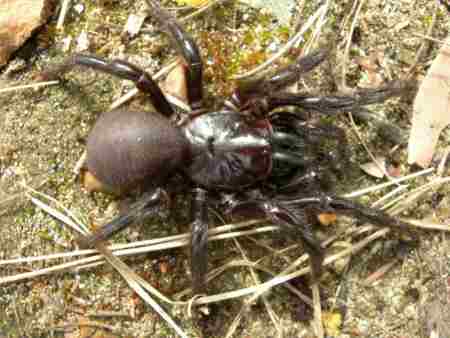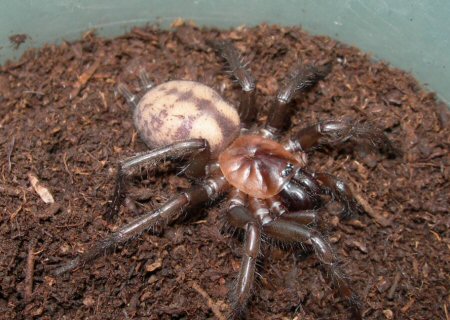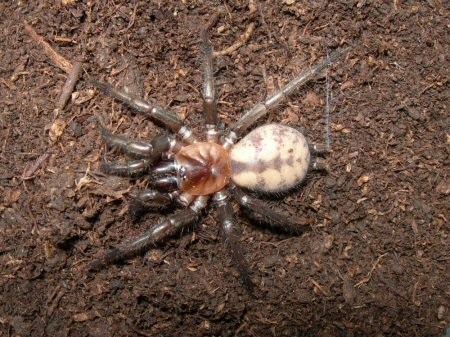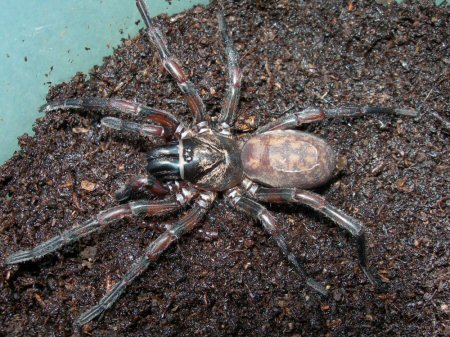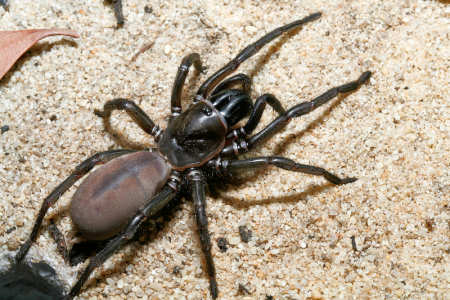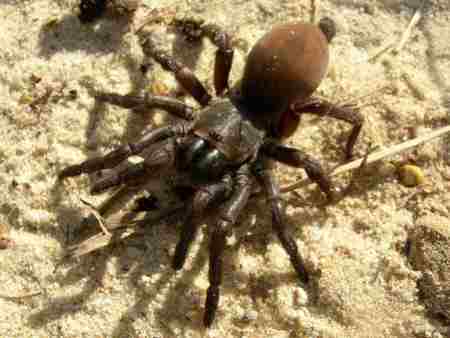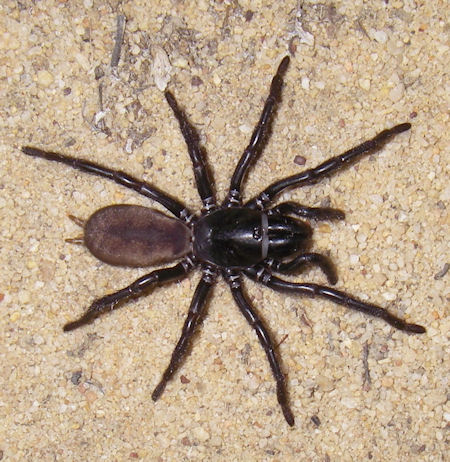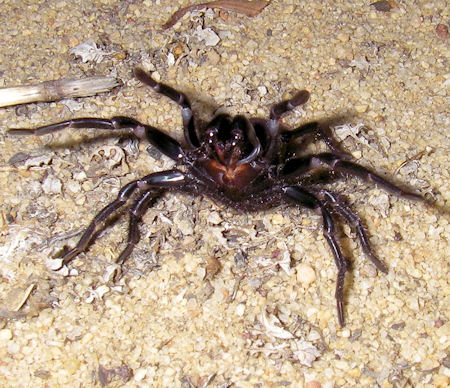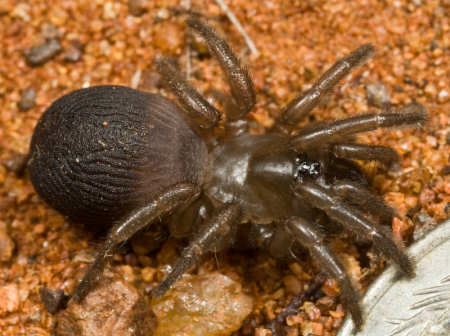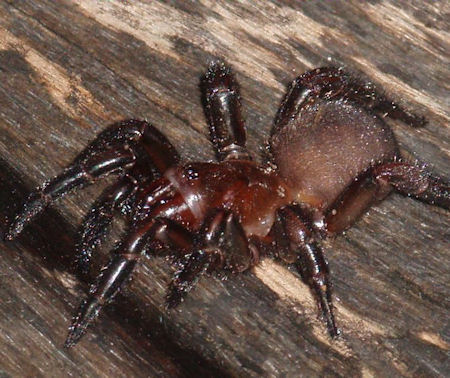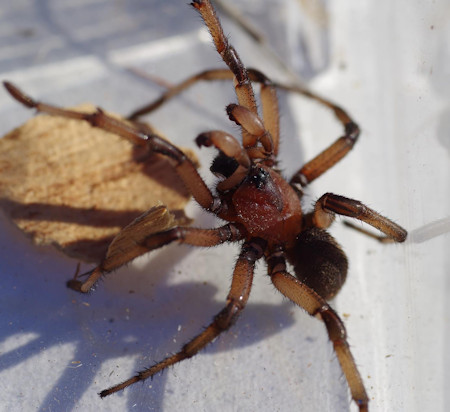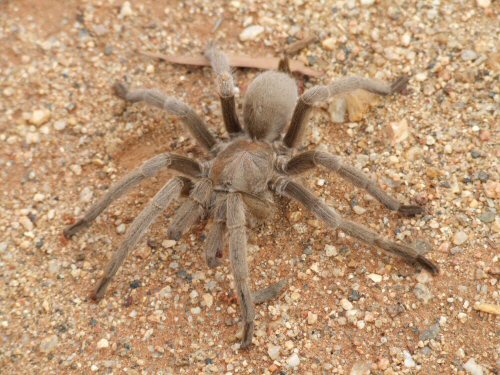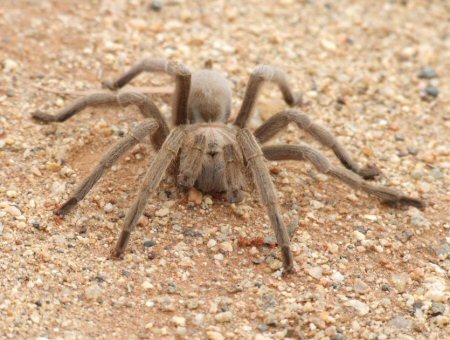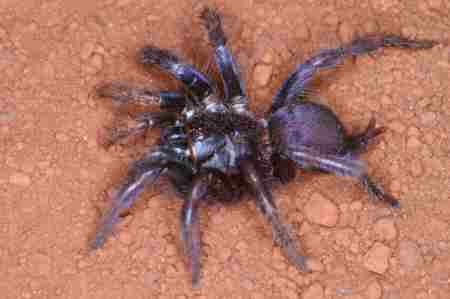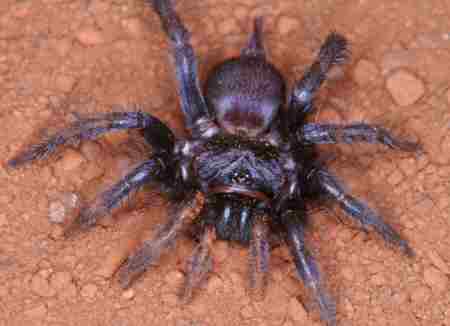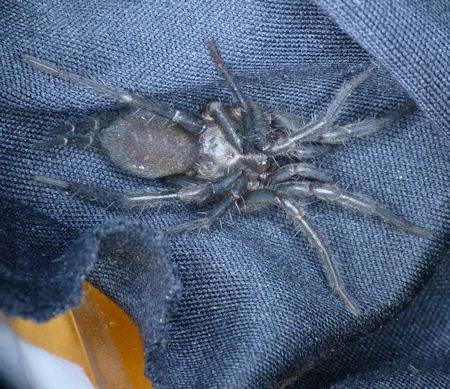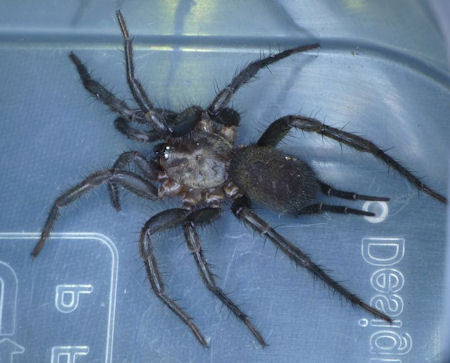These spiders, from
the sub-order Orthognatha (Mygalomorphae) or primitive spiders, are famous
for their falsely suggested "deadly" bites. More about the exaggerated
poisonous of these and other spiders can be
read here.
The bird-eating spider and Tarantula, which is a common name for these
spiders, the Goliath spider (Theraposa blondi) which is the largest
spider on the world with a leg span of 30 cm and a weight of 130 grams,
Sydney funnel web spider (Atrax robustus)and the mouse spider (Missulena)
are names given to species belonging to the order.
In Europe only two members of this sub-order can be found. In
Australia 13% (>240) of the spiders belong to the Mygalomorphae.
The ancestral lineage of these spiders goes back over 360 million
years.
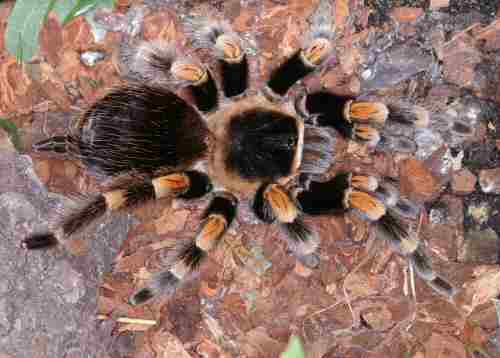
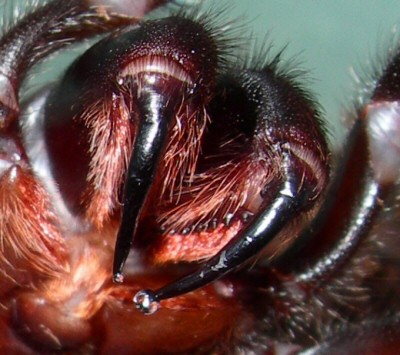
Most of these spiders live fearful lives buried deep
in holes. Many species react on unexpected events by cowering in fear,
unable to move, or by violently plunging their pickaxe fangs. (more
about the fangs)
The spider can often be spotted when the males start searching for
females and leave their burrows. Females are more difficult to find
because they can live for several years in their burrow with out leaving
it.
The two long spinnerets at the back end of their abdomen and their large fangs that move up and down instead of sideways, like the modern spiders, are characteristic for this order.
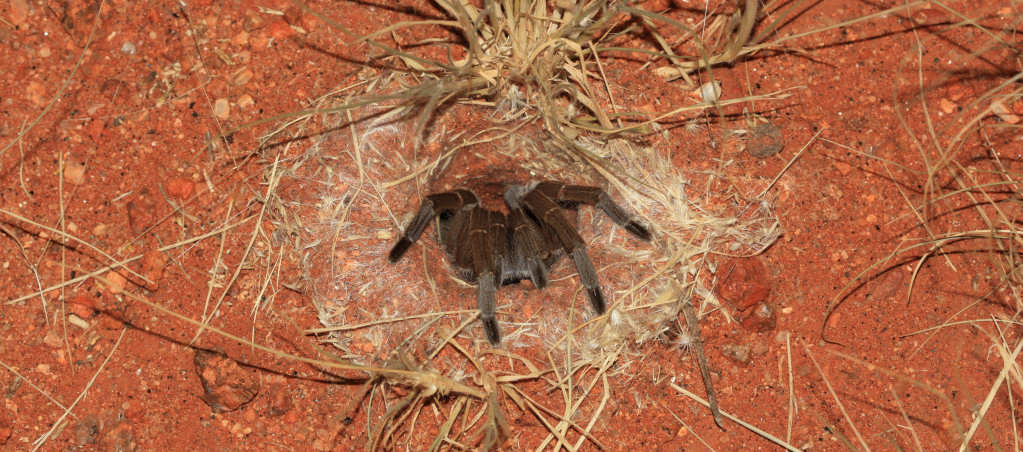
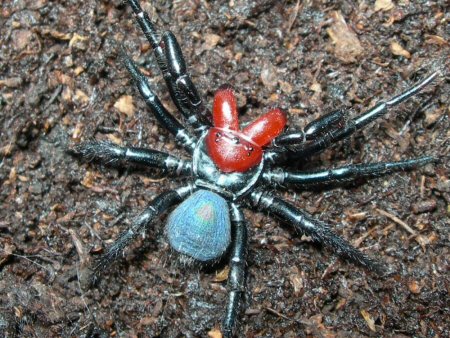
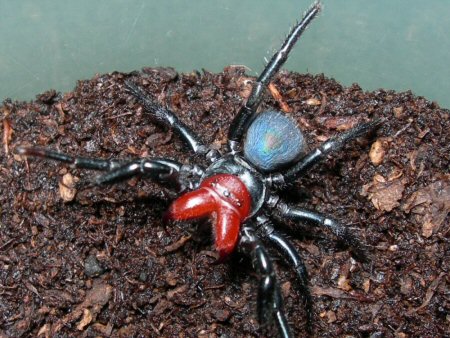
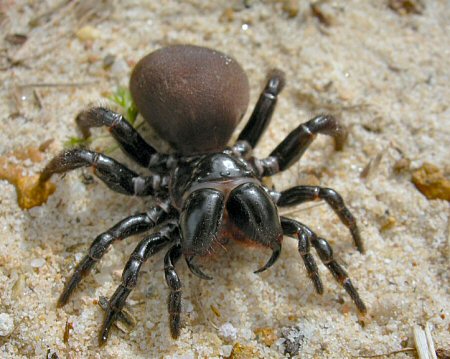

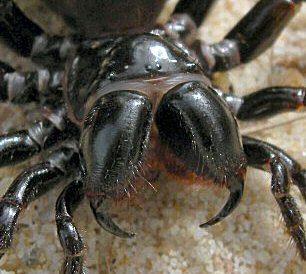 and
if she bites .. it hurts
and
if she bites .. it hurts 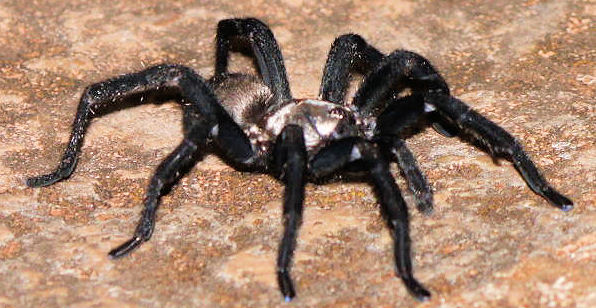

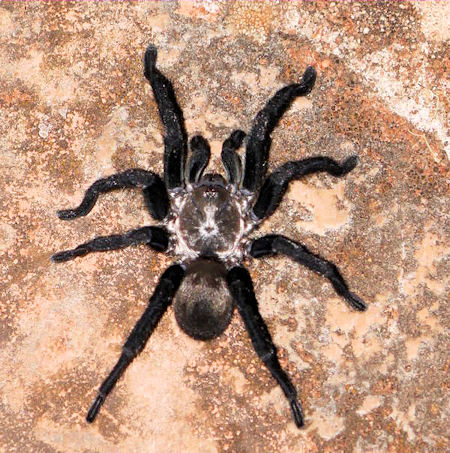
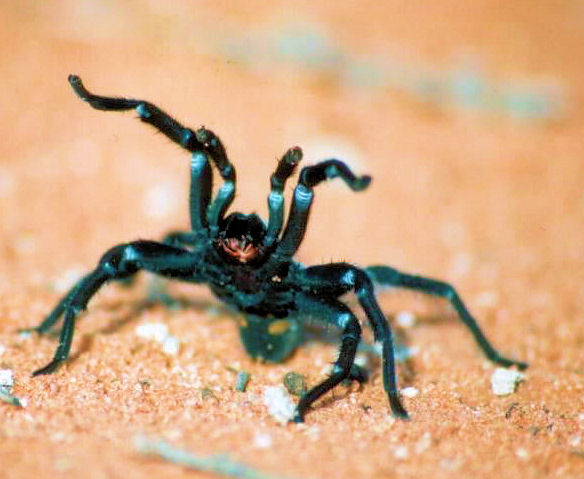 Idiommata
scintillans male
Idiommata
scintillans male